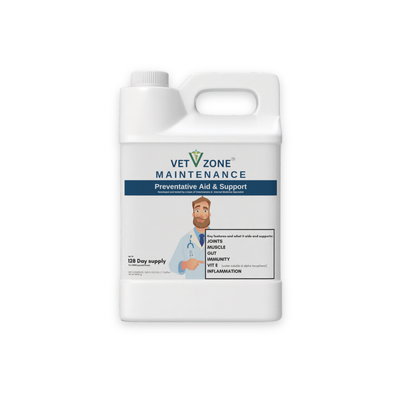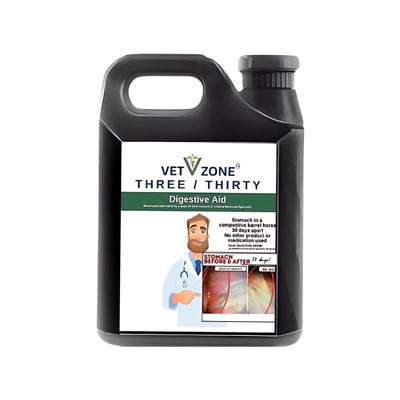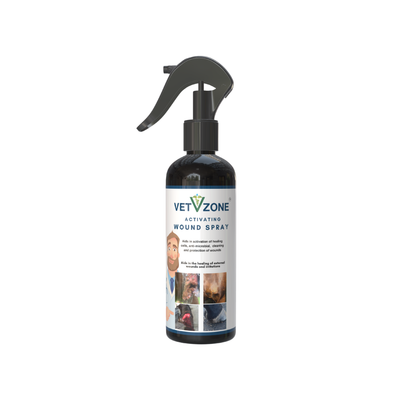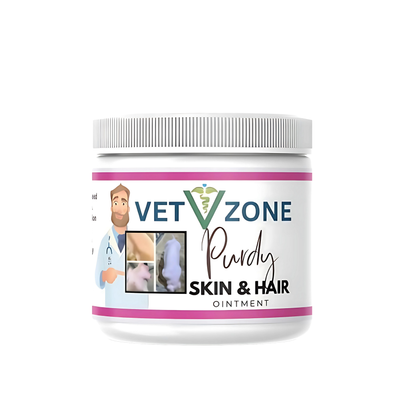Why Ozone?
Discover the science and sophistication behind VetZone’s signature ingredient—activated ozone. Trusted in veterinary practices for safe, accelerated healing across species.
Ozone (O₃) is a highly reactive molecule composed of three oxygen atoms. In veterinary medicine, it serves as a powerful oxidant with antimicrobial, anti-inflammatory, and immunomodulatory effects. VetZoneRx uses medical-grade ozonated oils to deliver these benefits topically—targeting healing at the cellular level.
Mechanism of Action
1. Antimicrobial Oxidation
Ozone disrupts the membranes of bacteria, viruses, and fungi through oxidative stress. This effect rapidly eliminates pathogens without relying on traditional antibiotics.
Scientific Source: Bocci, V. (2006). Ozone: A New Medical Drug.
2. Cellular Energy Activation
Ozone stimulates mitochondrial oxygen metabolism, enhancing ATP production and supporting tissue repair and regeneration.
Scientific Source: Elvis, A. M., & Ekta, J. S. (2011). Ozone therapy: A clinical review. J Nat Sci Biol Med.
3. Cytokine & Inflammation Modulation
Controlled ozone application balances immune responses and activates antioxidant defenses—reducing inflammation, swelling, and redness.
Why Ozonated Oils?
- Stable & Safe: Ozonated oils store ozone safely as ozonides—delivering activated oxygen topically without refrigeration.
- Deep Penetration: Our organic oil bases (sunflower or olive) enhance skin and tissue absorption.
- Veterinarian Formulated: Created by Dr. Meghan Qualls, DVM, Internal Medicine Specialist.
Veterinary Clinical Uses
| Condition | Ozone Benefit |
|---|---|
| Wound infections (canine, equine) | Disrupts bacterial biofilm; accelerates healing |
| Hoof rot, thrush, laminitis | Reduces inflammation; improves oxygenation |
| Ear infections & otitis externa | Antifungal and antibacterial properties |
| Skin fold dermatitis | Natural antimicrobial without steroids |
| Degloving injuries & abrasions | Boosts fibroblast activity and tissue repair |
Luxury-Level Science. Trusted by Vets.
VetZoneRx ozonated products are crafted using:
- Medical-grade oxygen (USP-93% purity)
- Cold-pressed organic carrier oils
- Laboratory-verified ozone concentrations
Each bottle delivers precision healing for animals—developed by veterinarians, for results that show.
Veterinary-Specific Studies
Ozone therapy in veterinary medicine: A review
Pérez-Torres, J. F. et al. (2019)
Link (PubMed)
→ Overview of veterinary applications in wound healing, musculoskeletal, and infectious diseases
Topical ozone therapy in the treatment of canine wounds
Vikartovska, A. et al. (2019)
Link (VetMed-Czech)
→ Case-controlled study showing ozone's effectiveness in healing canine skin wounds
Ozone therapy in the management of equine hoof infections
M. Díaz et al. (2015)
Link (NCBI)
→ Highlights use in thrush, laminitis, and abscesses
Mechanistic / Cellular Function
Ozone: A new medical drug
Bocci, V. (2005)
Link (Springer Book)
→ Landmark work detailing oxidative mechanisms and immune modulation in ozone therapy
Biological effects of ozone on human and animal cells
Elvis, A. M. & Ekta, J. S. (2011)
Link (Journal of Natural Science, Biology and Medicine)
→ Review covering ozone’s effect on mitochondria, cytokines, and cell membranes
The influence of ozone therapy on oxidative stress
Re, L. et al. (2008)
Link (Frontiers in Bioscience)
→ Describes antioxidant adaptation and systemic impact of medical ozone
Wound Healing and Inflammation
Ozone therapy for wound healing: A review of clinical applications
Karahasanoglu, A. et al. (2021)
Link (MDPI – Biomedicines)
→ Analyzes ozone’s efficacy for both acute and chronic wounds
Clinical use of ozone in diabetic foot ulcers
Lu, Y. et al. (2016)
Link (Wounds Journal)
→ While human-based, provides relatable mechanism and healing timelines





